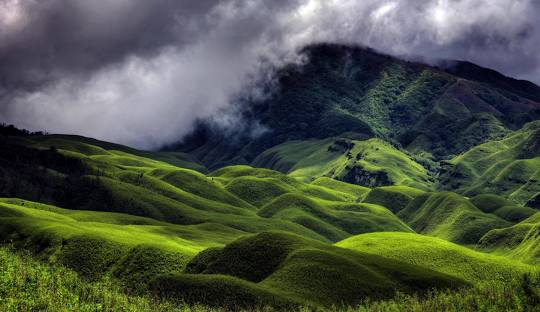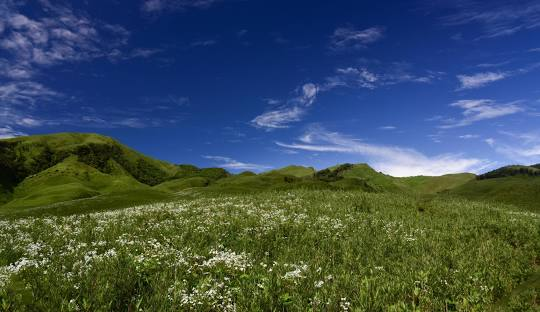Dzüko Valley: A Serene Paradise on the Border of Assam and Nagaland
Nestled between the borders of Assam and Nagaland, Dzüko Valley is a pristine haven of natural beauty that remains largely untouched by modern civilization. Renowned for its picturesque landscapes, rare flora, and tranquil environment, Dzüko Valley is a must-visit destination for nature lovers, adventure enthusiasts, and those seeking solace in the lap of nature.

Location and Accessibility
Dzüko Valley is situated at an altitude of approximately 2,452 meters (8,045 feet) above sea level, straddling the border between Nagaland and Manipur. The valley is located near the town of Kohima, the capital of Nagaland, and is about 25 kilometers from the city. The journey to Dzüko Valley typically begins from Viswema or Jakhama village, with Viswema being the more popular starting point due to its easier trekking route.
To reach Dzüko Valley from Assam, one can travel to Dimapur, the largest city in Nagaland, which is well-connected by road, rail, and air. From Dimapur, travelers can take a taxi or bus to Kohima, and from there, proceed to Viswema village, the starting point of the trek.
The Trek to Dzüko Valley
The trek to Dzüko Valley is a moderate-to-challenging experience, making it suitable for both seasoned trekkers and adventurous beginners. The trail from Viswema is well-marked and offers stunning views of the surrounding hills and forests. The initial part of the trek involves a steep climb through dense forests, but the trail gradually opens up to rolling hills and meadows as you approach the valley.

The entire trek to the valley takes around 4-6 hours, depending on your pace. Along the way, trekkers are treated to breathtaking vistas of verdant landscapes, gushing streams, and an abundance of wildflowers, especially during the monsoon season.
Flora and Fauna of Dzüko Valley
Dzüko Valley is often referred to as the "Valley of Flowers of the Northeast" due to its incredible variety of flora. The valley is carpeted with seasonal flowers, including the rare and endemic Dzüko Lily (Lilium chitrangadae), which blooms during the summer months, typically from June to September. The sight of the valley covered in a sea of colorful flowers is a sight to behold.
The valley is also home to a diverse range of flora, including rhododendrons, orchids, and various medicinal plants. The surrounding forests are rich in biodiversity, with several species of birds, butterflies, and other wildlife making it a haven for nature enthusiasts and bird watchers.
Camping in Dzüko Valley
Camping in Dzüko Valley is an unforgettable experience, offering a chance to immerse yourself in the tranquility of nature. There are designated camping sites in the valley, where visitors can pitch their tents and spend the night under the starlit sky. The crisp mountain air, the gentle sound of flowing streams, and the awe-inspiring scenery create a perfect setting for relaxation and rejuvenation.
For those who prefer more structured accommodations, there is a Dzüko Valley Guest House near the camping area, which provides basic facilities such as beds, cooking utensils, and clean water. However, it is advisable to carry your own food supplies and other essentials as the facilities are minimal.
Best Time to Visit
The best time to visit Dzüko Valley is during the summer months from June to September when the valley is in full bloom. The monsoon season brings life to the valley, transforming it into a colorful paradise. However, this period also brings rain, so trekkers should be prepared for wet conditions.
For those who prefer cooler weather and clear skies, the winter months from November to February are ideal. During this time, the valley is covered in a blanket of snow, offering a completely different but equally enchanting experience.
Tips for Travelers
- Trekking Gear: Wear sturdy trekking shoes, carry a raincoat, and pack warm clothing as the weather can change rapidly in the valley.
- Food and Water: Carry sufficient food supplies and drinking water. Although there are streams along the way, it’s safer to carry your own water.
- Permits: Ensure you have the necessary permits for trekking in Dzüko Valley. These can be obtained in Kohima or at the entry points to the trek.
- Local Guides: Hiring a local guide is recommended, especially if you are unfamiliar with the terrain. They can provide valuable insights and ensure a safe and enjoyable trek.
- Respect the Environment: Dzüko Valley is a fragile ecosystem, so it’s important to leave no trace. Carry your trash with you and avoid disturbing the natural surroundings.

Conclusion
Dzüko Valley is a treasure trove of natural beauty, offering a serene escape from the hustle and bustle of city life. Its untouched landscapes, vibrant flora, and the peaceful ambiance make it a perfect destination for those looking to connect with nature. Whether you are an avid trekker, a nature lover, or simply seeking a quiet retreat, Dzüko Valley promises an experience that will leave you enchanted and longing for more.
For visitors to Assam, a trip to Dzüko Valley can be seamlessly integrated into your travel itinerary, offering a unique glimpse into the natural wonders of Northeast India. The valley's unparalleled beauty and tranquility make it a must-visit destination for anyone exploring this region.
















